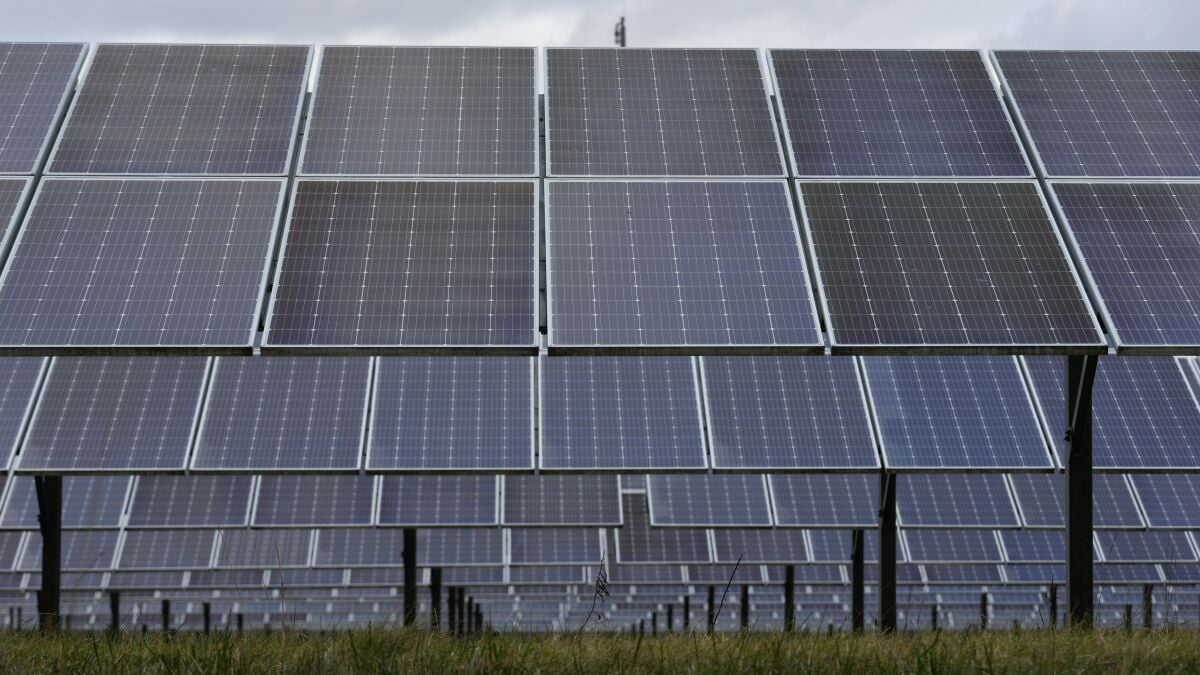San Diego Community Power , the community energy program that has enrolled about 900,000 accounts in the region, has approved a pair of solar-plus-storage projects to boost the amount of renewable power it delivers to customers in the next two years.
The first is a 20-year deal with the Yellow Pine III project in Clark County, Nevada, that will deliver 35 megawatts of solar power capacity and 35 megawatts/140 megawatt-hours of lithium-ion battery storage capacity to the electric grid. The storage portion of the contract plans to be operational by June 2025, with the solar portion in place by October 2025.
The expected annual energy production will be about 101,000 megawatt-hours. Though sited in Nevada, San Diego Community Power staff said the project will be directly tied to the electric grid managed by the California Independent System Operator.
Yellow Pine III is part of a larger 500-megawatt solar project being built by NextEra Energy Resources, a renewable energy company based in Florida.
The second 20-year contract board members approved on 5-0 votes Thursday night is the Brawley Solar and Storage Project that is expected to deliver 42 megawatts of solar capacity and 35 megawatts/140 megawatt-hours of battery storage capacity by April 15, 2025. The batteries will be made of lithium ion.
The project will be developed by ORNI 30 LLC, a subsidiary of Ormat Technologies Inc. The facility will be built on fallow farmland in Imperial County, adjacent to an existing geothermal facility and the city of Brawley’s wastewater treatment plant.
It’s expected to produce about 122,000 megawatt-hours of electricity per year, and ORNI 30 has promised that at least 80 percent of the workers it hires are from Imperial County and union labor.
“It’s a commitment by (San Diego Community Power) to ensure that we are not only meeting our ambitious goals but we’re creating good jobs,” said Joe LaCava, SDCP chair and a member of the San Diego City Council.
As per state rules, the financial terms of the Brawley and Yellow Pine contracts were not released.
SDCP’s plans to develop an energy portfolio that pencils out to 85 percent renewable sources by 2030 and 100 percent by 2035. SDCP currently is at 50 percent renewables. According to the California Energy Commission, San Diego Gas & Electric’s power mix in 2021 came to 44.5 percent renewables.
Launched in 2021, SDCP is one of 25 community choice aggregators , or CCAs, that have sprung up across the state in recent years. The programs were created by the Legislature in 2002 to encourage the growth of renewable energy and offer competition to traditional investor-owned utilities such as SDG&E.
In a rate plan approved at the start of this year, SDCP estimated that a typical residential customer using 327 kilowatt-hours of electricity in a month would pay a total monthly bill of $132.86, while a customer on SDG&E’s default rate would pay $134.81. That’s a difference of $1.95, or 1.5 percent less.
In April, National City and unincorporated areas of San Diego County joined SDCP’s roster that consists of the cities of San Diego, Chula Vista, La Mesa, Encinitas and Imperial Beach. Serving about 900,000 customer accounts, SDCP is the second-largest CCA in the state.
Under the CCA model, the decisions to buy power contracts from sources such as solar, battery and wind energy become the responsibility of local government officials.
Utilities such as SDG&E do not go away, though. They still perform every other duty outside of power purchases — such as maintaining poles, wires and power lines in their respective transmission and distribution systems, plus handling customer services, such as billing.
Once a jurisdiction establishes a CCA, customers are automatically enrolled. But if customers want to remain with the incumbent investor-owned utility, they can opt out for free.

